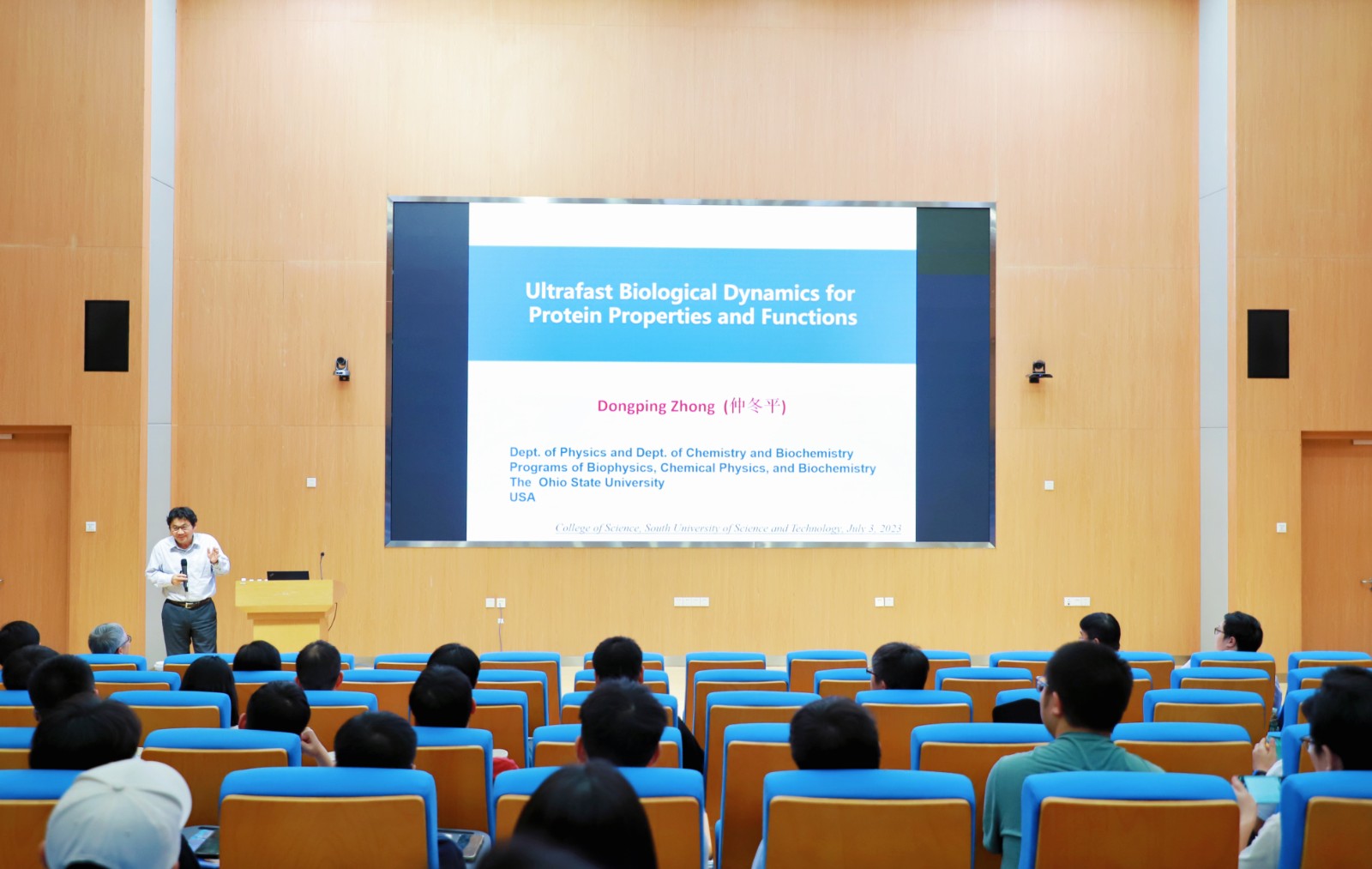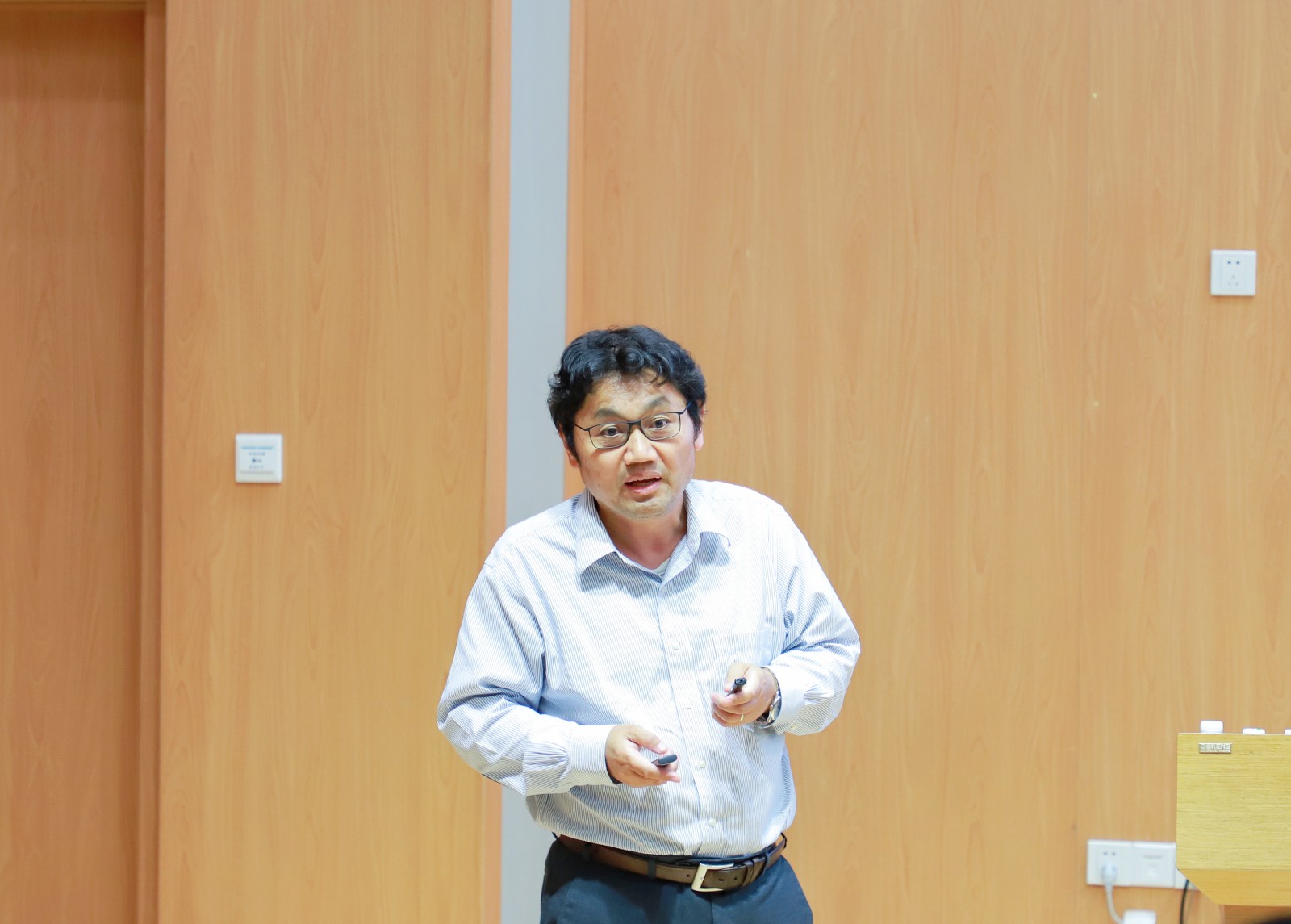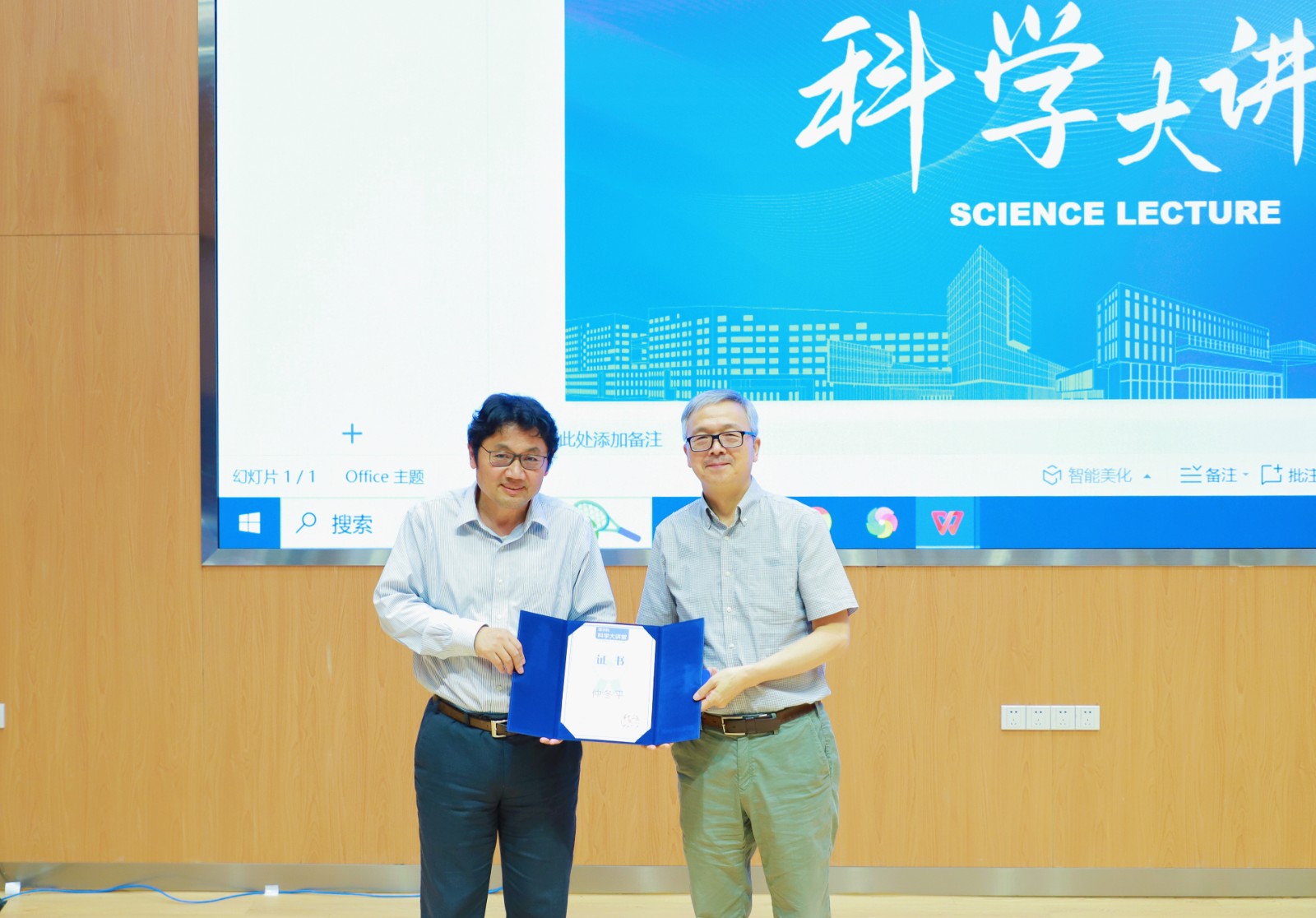Dongping ZHONG: Ultrafast Biological Dynamics for Protein Properties and Functions
Liping WEN, Yiqing CHEN 2023-07-06
On July 3, 2023, Prof. Dongping ZHONG from the Ohio State University was invited to the 122nd Science Lecture in the College of Science. He gave a lecture themed “Ultrafast Biological Dynamics for Protein Properties and Functions”, which was chaired by Academician Xueming YANG, Vice President and Dean of the College of Science, SUSTech.

In the report, Prof. Dongping ZHONG provided a comprehensive and accessible overview of the systematic work and recent advancements of his research group in DNA repair over the past decade. Prof. ZHONG began with an introduction to protein structure and proceeded to discuss the dynamics of protein molecules, starting with the timescales of processes related to protein structure and chemical reactions. He primarily focused on the dynamics of photoenzymes, photoreceptors, and protein receptor reactions, with an emphasis on protein hydration. Regarding the dynamics of photoenzyme reactions, Prof. ZHONG primarily discussed DNA photolyase. As DNA in living organisms is constantly subjected to damage, DNA photolyase plays a crucial role in repairing DNA damage.
Prof. ZHONG shared his research on the photolyase family spanning over 20 years, exploring different types of photolyases in various organisms, from mammals to bacteria. Photolyases are categorized into Class I and Class II, but there is a lack of a specific type of photolyase in the human body, which is present in many other animals and even plants, enabling the repair of severe sunburns. Research conducted by Prof. ZHONG's team demonstrates that photolyases are capable of breaking incorrect chemical bonds, allowing the atoms in DNA to return to their original positions. Upon completion of the repair, the DNA helix automatically releases electrons and protons towards the photolyase, restoring its original state and enabling it to continue repairing other damaged DNA. Due to the involvement of photo-electron transfer processes in the reaction of this enzyme, Prof. ZHONG analyzed the dynamics of the DNA repair process by gradually changing the absorbed light wavelengths, unraveling the dynamics of the DNA repair process. Furthermore, Prof. ZHONG researched on the active site and tunneling pathway related to electronic transport, analyzing the dynamics of DNA repair from multiple perspectives. Prof. ZHONG also discussed his research on ultraviolet (UV) light receptors. While UV light is harmful to living organisms, scientific research has discovered photoreceptor proteins activated by UV light. Prof. ZHONG introduced the structure of UV light receptors and highlighted the complexity of this structure, posing challenges for experimental investigations into energy transfer processes. Through ultrafast fluorescence processes (ranging from 200 femtoseconds to 20 picoseconds), Prof. ZHONG successfully characterized the energy transfer processes within photoreceptor proteins. From the energy transfer process, he further discovered the electron transfer processes within proteins and conducted corresponding studies using quantum chemical theoretical calculations.

Prof. ZHONG introduced his research on protein hydration. Starting with the Apomorphine protein, his research group derived the relevant equations describing the reactions between proteins and water. These equations explain the origins of properties such as hydrophilicity and hydrophobicity on the protein surface. Additionally, Prof. ZHONG explored the interaction between proteins and water on the protein surface, revealing the timescales of the effects of water on the protein surface. Moreover, Prof. ZHONG investigated biological machines that utilize structural changes in proteins to study the reactions between proteins and water.
During the interactive Q&A session, both the faculty and students actively posed questions on topics such as the reaction dynamics of photolyases, the structure of photoreceptor proteins, and the reaction dynamics of protein hydration processes. Prof. ZHONG provided detailed answers to each question.
In conclusion, Academician Xueming YANG handed an honorary certificate to Prof. Dongping ZHONG.





